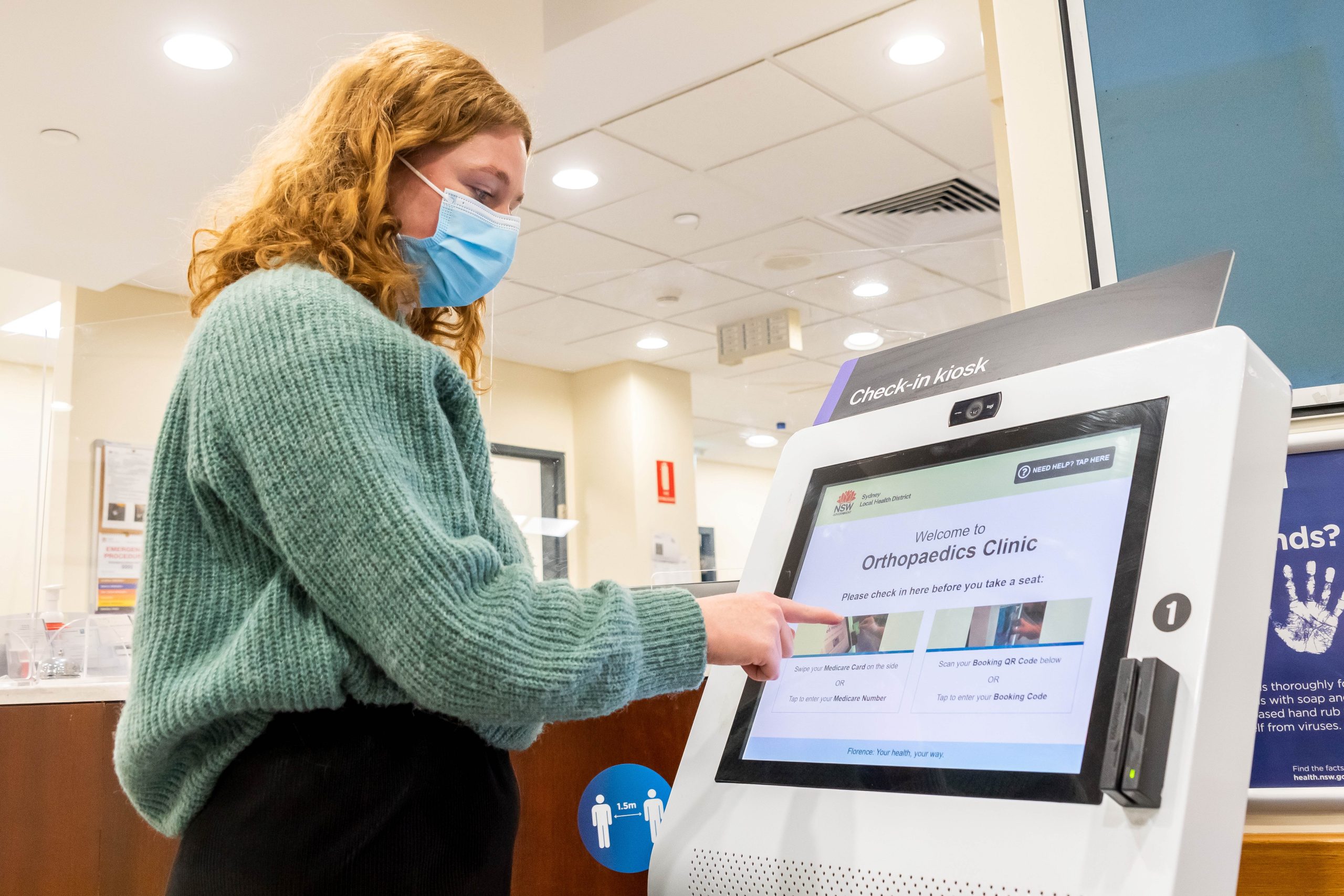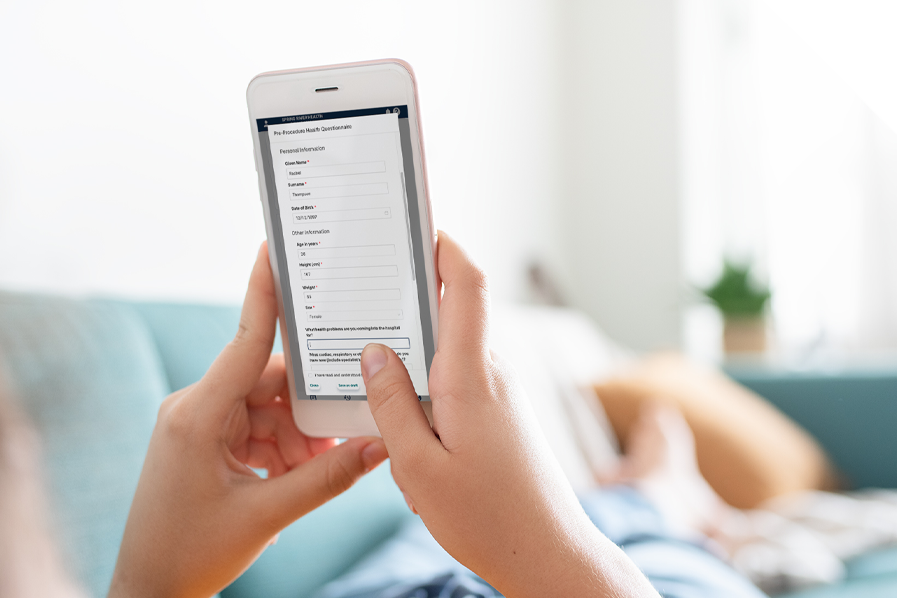The hospital experience is changing, and hospitals of the future are set to challenge the status quo. Design for new hospitals focuses squarely on the patient and staff experience: reducing stress, promoting wellness and collaboration, fostering a connection to nature, and enhancing sustainability.
The digital patient experience must also adapt.
Patients need choice and control in engaging with their healthcare provider before, during and after their hospital visit. In the physical environment, digital touchpoints must blend seamlessly into low-tech, restful environments.
How does digital adoption benefit patients and healthcare staff?
Digital adoption in healthcare brings a transformative impact, benefiting both patients and staff through enhanced convenience and efficiency in digital health. For patients, digital platforms provide greater flexibility and control over their healthcare experience. They can book appointments, engage in telehealth consultations, and access important health information easily, often from the comfort of their own homes. This seamless connectivity reduces the stress and anxiety often associated with medical visits, empowering patients to manage their health proactively.
Healthcare services are significantly improved through the integration of digital health tools, which enhance communication between healthcare providers and clients, ultimately improving patient care and safety.
For healthcare staff, digital technologies streamline many operational processes, reducing administrative burdens and allowing them to focus on patient care. Solutions that manage patient flow and queue times help minimise waiting periods and enhance patient flow within the facility, leading to a smoother experience. Additionally, automated systems for visitor management simplify check-in and security procedures, improving both safety and efficiency. As a result, healthcare professionals can devote more attention to clinical tasks, ultimately improving the quality of care provided.
In what innovative ways is digital transformation in healthcare occurring?
Healthcare is undergoing a digital transformation, significantly reshaping the way patients receive care and interact with medical providers. One of the key innovations is the development of digital health solutions that allow patients to engage with healthcare providers remotely. These systems enable patients to book appointments, fill out forms, and access important information before even arriving at the hospital, streamlining the administrative process and minimising unnecessary in-person visits.
This digital health transformation is revolutionising the healthcare industry by integrating advanced technologies to improve patient care and operational efficiency.
Within hospital settings, digital tools like digital signage offer calming ambient content and information in waiting areas, creating a more pleasant environment for patients. Digital solutions like digital front doors also help patients stay connected throughout their care journey, from pre-admission to post-discharge, ensuring they receive the right information at the right time.
Hospitals are also adopting advanced systems for visitor management, which enhance security and create a more organised, seamless experience for both patients and visitors. These digital health solutions, including the use of electronic medical records, are not only improving the overall digital patient experience but are also making healthcare more accessible, efficient, and patient-centered.
Digital experience starts at home
The digital experience isn’t confined to the physical hospital building. The digital patient journey must encompass touchpoints before, during and after the patient visits the hospital.
Patients can connect with their health provider at home, anytime and directly from their mobile device. They use a personalised patient hub to change appointments, update details, fill out forms and learn about how to prepare and what to expect from their hospital visit.
At the hospital, mobile-first is the future
Hospitals of the future will not require patients to visit a check-in desk or kiosk for an appointment. Rather, patients will check-in on their mobile device, receive information about expected wait time, and be given a choice about where to wait. They can grab a coffee or work in a quiet location and receive a text callback. Wait rooms will be intimate, calm and relaxing, with immersive nature video content on digital displays and silent queue calling displays to keep patient flow moving.
Staying connected post-care
On discharge, patients can remain connected with their healthcare provider, to receive digital information, provide feedback, message questions, and manage follow-up appointments.
The Patient Journey

At home
I can…
- Access my personalised patient hub
- Manage my appointment
- Request a telehealth appointment
- Message the hospital
- Receive reminders and information resources
- Complete digital forms

At the hospital
I can…
- Navigate via digital directories and wayfinding
- Check-in via mobile, kiosk or with assistance
- See estimated wait times and receive queue updates
- Wait where I like
- View useful/calming digital signage with queue updates
- Request scripts digitally from the hospital pharmacy

After my visit
I can…
- Receive discharge information and care plans
- Receive reminders and information resources
- Provide feedback and complete surveys
- Manage follow-up appointments
- Message the hospital



